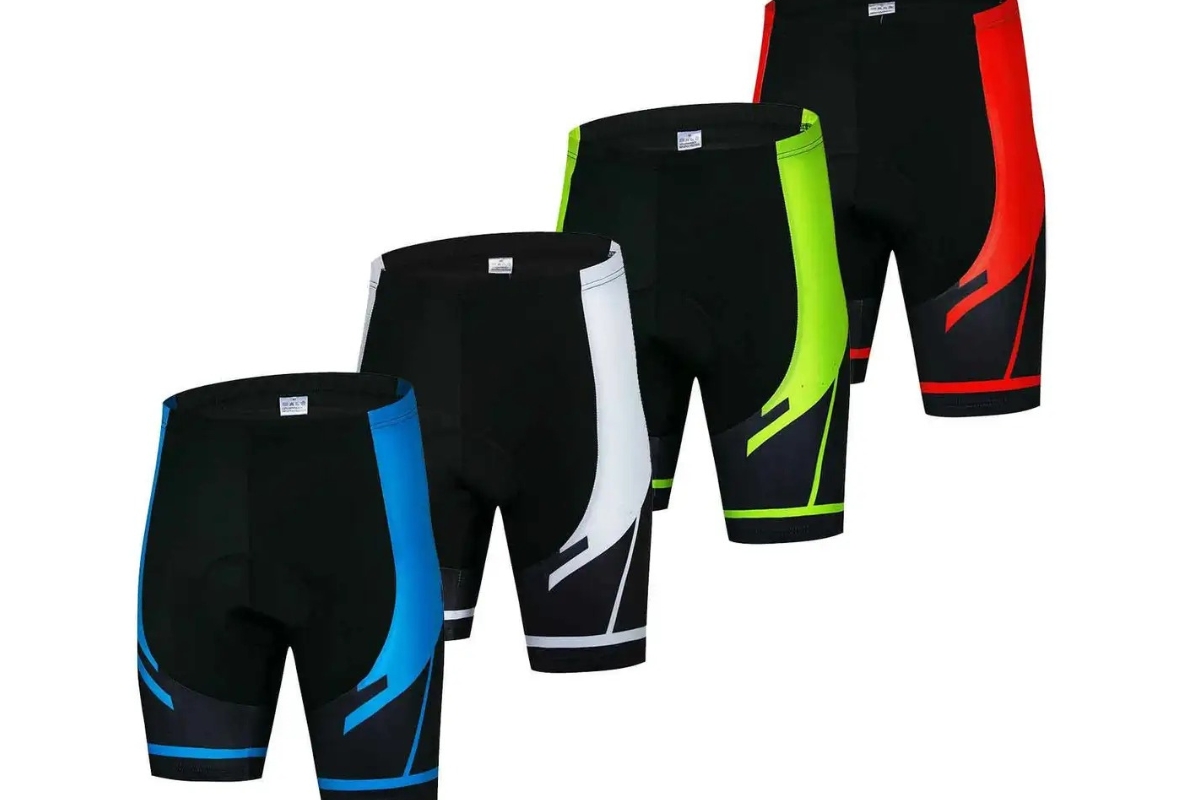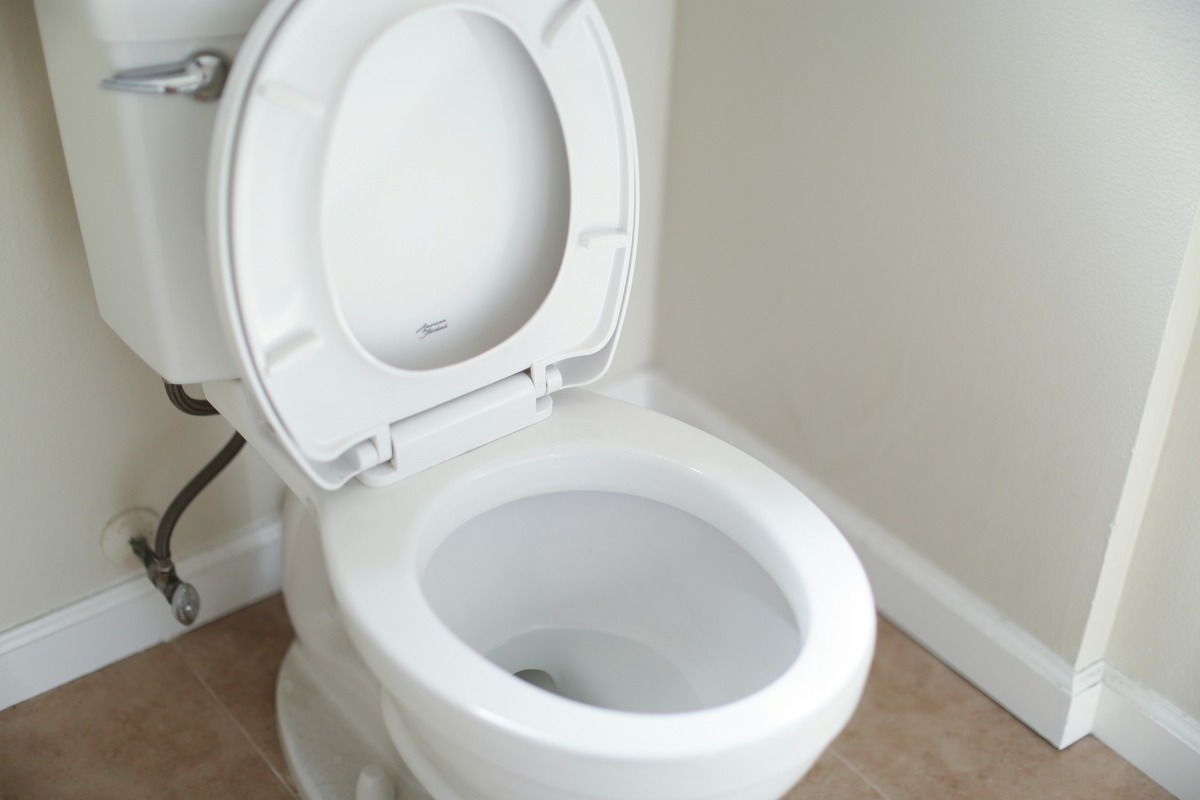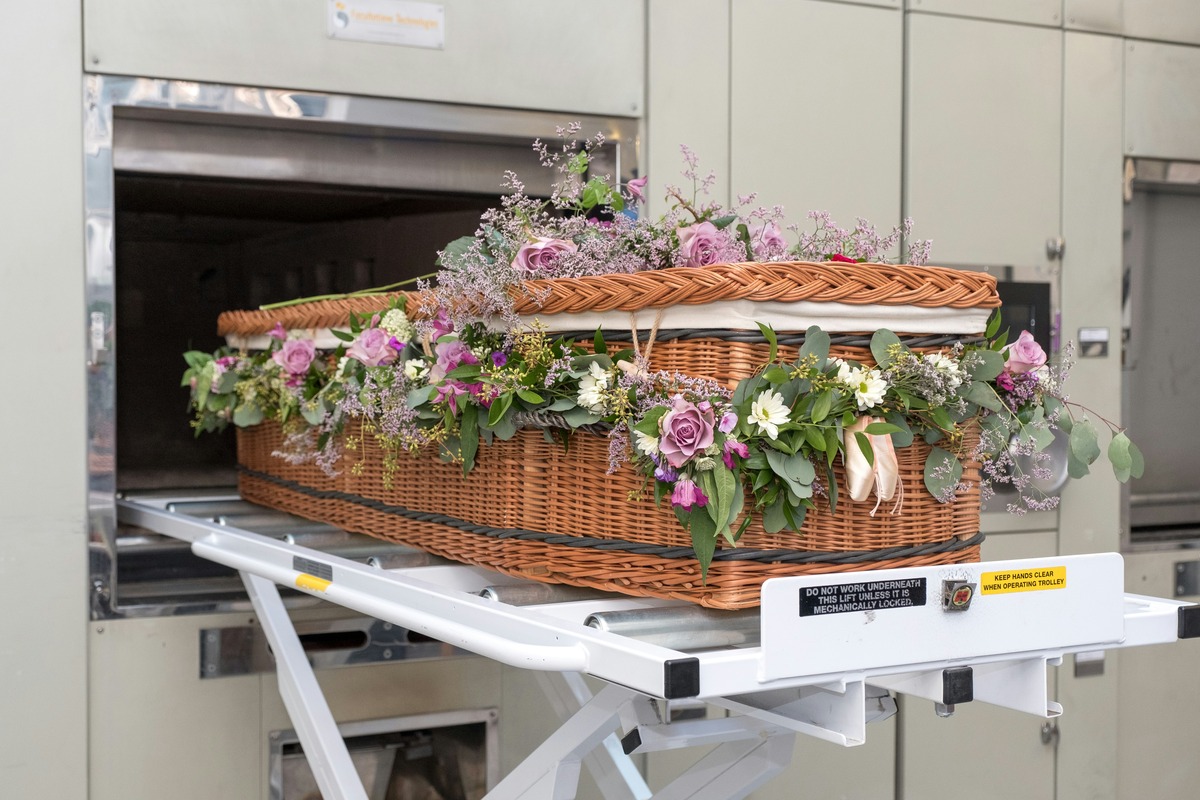Home>Sports>The Surprising Truth About Padded Cycling Shorts


Sports
The Surprising Truth About Padded Cycling Shorts
Modified: January 22, 2024
Discover the surprising benefits of padded cycling shorts for sports enthusiasts. Find out how this gear can enhance your performance and comfort while cycling.
(Many of the links in this article redirect to a specific reviewed product. Your purchase of these products through affiliate links helps to generate commission for Noodls.com, at no extra cost. Learn more)
Table of Contents
Introduction
Cycling is a popular and exhilarating activity that appeals to people of all ages and fitness levels. Whether you’re a casual rider or a serious enthusiast, the comfort and functionality of your cycling gear can significantly impact your overall experience on the road or trail. One essential piece of equipment that has gained widespread attention in the cycling community is padded cycling shorts. These specialized garments are designed to provide comfort, support, and protection during extended rides, making them a valuable asset for cyclists of all levels.
Padded cycling shorts, also known as cycling bibs or chamois shorts, are specifically engineered to address the unique challenges and demands of cycling. They feature strategically placed padding, typically made from foam or gel, to cushion the rider’s sit bones and alleviate pressure points. Additionally, these shorts are crafted from moisture-wicking materials that help manage sweat and maintain a dry, comfortable environment for the rider. The combination of padding and moisture control makes padded cycling shorts an indispensable choice for anyone seeking to enhance their cycling experience.
In this comprehensive guide, we will delve into the intriguing world of padded cycling shorts, exploring their history, benefits, scientific principles, common misconceptions, and tips for selecting the ideal pair. Whether you’re a seasoned cyclist looking to upgrade your gear or a newcomer seeking insights into this essential cycling accessory, this article will provide valuable insights and practical advice to elevate your riding experience. So, fasten your helmet and prepare to embark on an enlightening journey into the surprising truth about padded cycling shorts.
The History of Padded Cycling Shorts
The evolution of padded cycling shorts is a fascinating journey that reflects the dedication to enhancing comfort and performance in the cycling world. The origins of padded cycling shorts can be traced back to the early 20th century when cycling surged in popularity as a recreational and competitive sport. During this time, cyclists predominantly relied on traditional clothing, such as woolen shorts, which provided minimal protection and comfort during long rides.
The pivotal moment in the history of padded cycling shorts occurred in the 1940s when innovative materials and design concepts began to revolutionize cycling apparel. The introduction of the chamois leather pad, derived from the soft and supple hide of the chamois goat, marked a significant breakthrough in enhancing rider comfort. This natural padding material was incorporated into cycling shorts to provide a layer of cushioning between the rider’s body and the hard saddle, effectively reducing friction and minimizing chafing.
As cycling continued to gain traction as a mainstream activity, advancements in textile technology further propelled the evolution of padded cycling shorts. The chamois leather padding was gradually replaced by synthetic materials, such as foam and gel, which offered enhanced durability, moisture-wicking properties, and improved shock absorption. These developments allowed for the design of more ergonomic and performance-oriented cycling shorts, catering to the diverse needs of riders across various disciplines, including road cycling, mountain biking, and competitive racing.
In recent decades, the integration of anatomical shaping and seamless construction has elevated the functionality and fit of padded cycling shorts, catering to the dynamic movements and postures of cyclists. Furthermore, the proliferation of specialized cycling apparel brands and the influence of professional riders have spurred continuous innovation in the realm of padded cycling shorts, resulting in a diverse array of styles, features, and performance enhancements.
Today, padded cycling shorts stand as a testament to the enduring commitment to rider comfort and performance, embodying a rich legacy of technological advancements and ergonomic design principles. The evolution of these essential garments reflects the intersection of tradition, innovation, and a deep understanding of the unique demands placed on cyclists. As we continue to embrace the legacy of padded cycling shorts, it is evident that their evolution will persist, driven by a relentless pursuit of excellence in enhancing the cycling experience for enthusiasts and athletes alike.
The Benefits of Padded Cycling Shorts
Padded cycling shorts offer a myriad of advantages that cater to the specific needs and comfort of cyclists, making them an indispensable component of cycling attire. Understanding the distinct benefits of these specialized garments can provide valuable insights into their role in enhancing the overall riding experience.
1. Enhanced Comfort and Support
The primary benefit of padded cycling shorts lies in their ability to provide enhanced comfort and support during extended rides. The strategically placed padding, typically positioned around the sit bones, serves to cushion the rider, reducing pressure points and minimizing discomfort. This feature is particularly beneficial for long-distance cyclists, as it helps alleviate the strain on the pelvic area and promotes a more enjoyable and sustainable riding experience.
2. Reduced Friction and Chafing
Padded cycling shorts effectively mitigate the risk of friction and chafing, which can result from prolonged contact between the rider’s body and the saddle. The padding serves as a protective barrier, preventing skin irritation and abrasions, thereby promoting a smoother and more comfortable ride. This benefit is especially crucial for cyclists who engage in rigorous training or competitive events, where minimizing discomfort and distractions is essential for peak performance.
3. Moisture Management
Another notable advantage of padded cycling shorts is their ability to manage moisture effectively. The materials used in these shorts are designed to wick away sweat and maintain a dry and breathable environment, reducing the risk of chafing and bacterial growth. By regulating moisture, padded cycling shorts contribute to overall hygiene and comfort, allowing riders to focus on their performance without being impeded by perspiration-related issues.
4. Impact Absorption
The padding in cycling shorts serves as a layer of impact absorption, particularly beneficial for off-road or mountain biking where uneven terrain and rough trails can subject riders to jolts and vibrations. The cushioning properties of padded shorts help dampen the impact of bumps and shocks, reducing the strain on the rider’s body and enhancing overall stability and control.
5. Muscle Support and Stability
Padded cycling shorts also offer muscle support and stability, contributing to improved performance and reduced fatigue. The compression elements in these shorts help promote blood circulation and reduce muscle oscillation, thereby enhancing endurance and minimizing the risk of muscle strain during prolonged rides.
In summary, the benefits of padded cycling shorts encompass a holistic approach to rider comfort, performance, and well-being. By addressing key aspects such as comfort, friction reduction, moisture management, impact absorption, and muscle support, these specialized garments play a pivotal role in elevating the cycling experience for riders of all levels, ultimately contributing to a more enjoyable, sustainable, and rewarding journey on the road or trail.
The Science Behind Padded Cycling Shorts
The design and functionality of padded cycling shorts are intricately linked to the principles of biomechanics, ergonomics, and material science, all of which converge to optimize rider comfort, performance, and overall well-being. At the core of the science behind padded cycling shorts lies a profound understanding of the physiological and mechanical dynamics involved in cycling, as well as the biomechanical demands placed on the human body during prolonged rides.
The strategic placement of padding in cycling shorts is informed by the anatomical structure of the human pelvis and the biomechanics of cycling motion. By targeting the sit bones, also known as the ischial tuberosities, the padding serves to alleviate pressure and distribute the rider’s weight more evenly across the saddle. This not only reduces discomfort and potential tissue damage but also minimizes the risk of nerve compression, which can lead to numbness and tingling in the lower extremities.
Moreover, the materials used in the construction of padded cycling shorts are chosen for their moisture-wicking properties, breathability, and durability. Advanced synthetic fabrics and foams are employed to manage sweat and maintain a dry, hygienic environment, preventing the accumulation of moisture that can lead to skin irritation and bacterial growth. Additionally, the seamless construction and ergonomic shaping of these shorts are designed to minimize friction and chafing, promoting a smooth and uninterrupted riding experience.
The science behind padded cycling shorts also encompasses the principles of shock absorption and impact mitigation. The padding serves as a crucial interface between the rider and the saddle, dampening vibrations and reducing the transmission of shocks from uneven terrain or road imperfections. This not only enhances rider comfort but also contributes to stability, control, and overall riding efficiency, particularly in off-road and mountain biking scenarios.
Furthermore, the compression elements integrated into padded cycling shorts play a pivotal role in promoting muscle support, circulation, and stability. By applying gentle pressure to specific muscle groups, these garments help reduce muscle oscillation, enhance blood flow, and minimize fatigue, thereby contributing to improved endurance and sustained performance during extended rides.
In essence, the science behind padded cycling shorts embodies a multidisciplinary approach that harmonizes biomechanical, ergonomic, and material science principles to create a garment that optimally supports the rider’s body, enhances comfort, and mitigates the physical stresses associated with cycling. By integrating advanced materials, anatomical design, and biomechanical insights, these specialized shorts stand as a testament to the seamless fusion of science and innovation in the pursuit of elevating the cycling experience for enthusiasts and athletes alike.
Common Misconceptions about Padded Cycling Shorts
Despite the numerous benefits and advancements in cycling apparel, several misconceptions surrounding padded cycling shorts persist within the cycling community and beyond. Dispelling these misconceptions is essential to provide clarity and insight into the true value of these specialized garments.
One prevalent misconception is that padded cycling shorts are exclusively for professional or competitive cyclists. In reality, padded cycling shorts offer significant advantages to riders of all levels, from casual enthusiasts to seasoned athletes. Whether embarking on leisurely rides or engaging in rigorous training, the comfort, support, and moisture-wicking properties of padded shorts can enhance the overall riding experience for anyone seeking to minimize discomfort and maximize performance.
Another common misconception pertains to the belief that padded cycling shorts are unnecessary for short or occasional rides. While it’s true that prolonged rides can accentuate the need for enhanced comfort and support, even short outings can subject riders to discomfort and friction. Padded cycling shorts, with their ability to reduce chafing, manage moisture, and provide impact absorption, offer valuable benefits regardless of the ride duration, making them a worthwhile investment for any cycling enthusiast.
Additionally, there is a misconception that padded cycling shorts are primarily for road cyclists and may not be essential for mountain biking or other off-road disciplines. In reality, the impact absorption and muscle support provided by padded shorts are equally beneficial in off-road scenarios, where rough terrain and uneven surfaces can subject riders to increased physical strain. By minimizing the impact of shocks and promoting muscle stability, padded cycling shorts are integral to enhancing comfort and performance across diverse cycling environments.
Furthermore, some individuals may mistakenly believe that padded cycling shorts are a fashion statement rather than a functional necessity. Contrary to this notion, the design and construction of padded shorts are rooted in biomechanical and ergonomic principles, aimed at optimizing rider comfort and well-being. While style and aesthetics play a role in cycling apparel, the functional benefits of padded shorts extend far beyond mere fashion, contributing to a more enjoyable, sustainable, and rewarding riding experience.
By dispelling these prevalent misconceptions, it becomes clear that padded cycling shorts extend their advantages beyond any specific cycling group or riding preference. Instead, they provide universal benefits that accommodate the diverse requirements and ambitions of cyclists, including quad rugby enthusiasts, highlighting their essential contribution to enhancing comfort, performance, and overall satisfaction during quad rugby sessions.
Choosing the Right Padded Cycling Shorts
Selecting the ideal padded cycling shorts is a pivotal decision that can significantly influence your riding experience. With a myriad of options available in the market, understanding the key factors to consider will empower you to make an informed and tailored choice that aligns with your specific needs and preferences.
1. Fit and Comfort
The foundation of choosing the right padded cycling shorts lies in achieving a proper fit and exceptional comfort. Look for shorts that conform to your body shape without causing excessive constriction or sagging. The leg grippers should hold the shorts in place without digging into your skin, ensuring a secure and comfortable fit throughout your ride.
2. Padding Design and Thickness
The padding design and thickness play a crucial role in determining the level of support and cushioning provided by the shorts. Consider the type of cycling you primarily engage in, as this will influence the ideal padding configuration. For longer road rides, a chamois with multi-density foam and strategic gel inserts may offer enhanced comfort, while mountain biking may benefit from thicker padding to mitigate rough terrain impact.
3. Material and Construction
Evaluate the materials used in the construction of the shorts, focusing on breathability, moisture-wicking capabilities, and durability. High-quality synthetic fabrics with mesh panels facilitate airflow and moisture management, keeping you dry and comfortable during intense rides. Seamless construction and flatlock stitching minimize friction and chafing, contributing to a smoother and irritation-free experience.
4. Riding Style and Discipline
Consider your riding style and discipline when choosing padded cycling shorts. Road cyclists may prioritize aerodynamic designs and lightweight materials, while mountain bikers may seek rugged, abrasion-resistant shorts with additional protective features. Understanding the specific demands of your cycling activities will guide you towards shorts that align with your performance and comfort requirements.
5. Brand and Reviews
Research reputable cycling apparel brands known for their commitment to quality and innovation. Explore reviews and feedback from fellow cyclists to gain insights into the performance, durability, and overall satisfaction with different padded shorts. A trusted brand with a track record of delivering exceptional cycling gear can instill confidence in your purchasing decision.
6. Personal Preference
Ultimately, personal preference and individual comfort should guide your selection of padded cycling shorts. Factors such as color, design, and additional features, such as reflective elements for low-light visibility or integrated storage pockets, can contribute to a tailored and enjoyable riding experience. Embracing your unique preferences while prioritizing functionality will ensure that your chosen shorts resonate with your cycling journey.
By considering these essential aspects, you can navigate the diverse landscape of padded cycling shorts with clarity and purpose, empowering yourself to make a discerning choice that optimally aligns with your riding aspirations and enhances your overall cycling endeavors.
Conclusion
In conclusion, the journey into the realm of padded cycling shorts has unveiled a tapestry of innovation, functionality, and compelling benefits that underscore their indispensable role in the cycling experience. From their rich historical evolution to the intricate science behind their design, padded cycling shorts stand as a testament to the seamless fusion of tradition, technology, and biomechanical insights. As we navigate the diverse misconceptions and considerations surrounding these essential garments, it becomes evident that their impact transcends mere comfort, extending to performance, well-being, and the holistic enjoyment of cycling.
The surprising truth about padded cycling shorts lies in their universal appeal and transformative potential for riders of all levels. Whether embarking on leisurely excursions, conquering challenging terrains, or pursuing competitive endeavors, the benefits of padded shorts resonate across diverse cycling disciplines, enriching the riding experience and empowering cyclists to push their boundaries with confidence and comfort.
The enduring legacy of padded cycling shorts is rooted in their ability to mitigate discomfort, reduce friction, manage moisture, and provide crucial support and stability, all while harmonizing with the dynamic movements and demands of cycling. By embracing the science of biomechanics, ergonomic design, and advanced materials, these specialized garments have transcended conventional expectations, emerging as a cornerstone of rider-centric innovation and a symbol of unwavering commitment to elevating the cycling experience.
As cyclists continue to seek optimal performance, comfort, and enjoyment on the road or trail, the significance of choosing the right padded cycling shorts cannot be overstated. The quest for the ideal pair encompasses a blend of personalized fit, padding configuration, material quality, and riding-specific considerations, culminating in a tailored selection that harmonizes with individual preferences and aspirations.
In essence, the surprising truth about padded cycling shorts lies not only in their tangible benefits but also in their intangible ability to inspire confidence, resilience, and a profound connection between the rider and the cycling journey. As we embrace the evolution and innovation that define the realm of padded cycling shorts, it is clear that their profound impact will continue to shape and enhance the cycling experience, transcending boundaries and empowering riders to embark on exhilarating, comfortable, and rewarding adventures with unwavering zeal and comfort.











